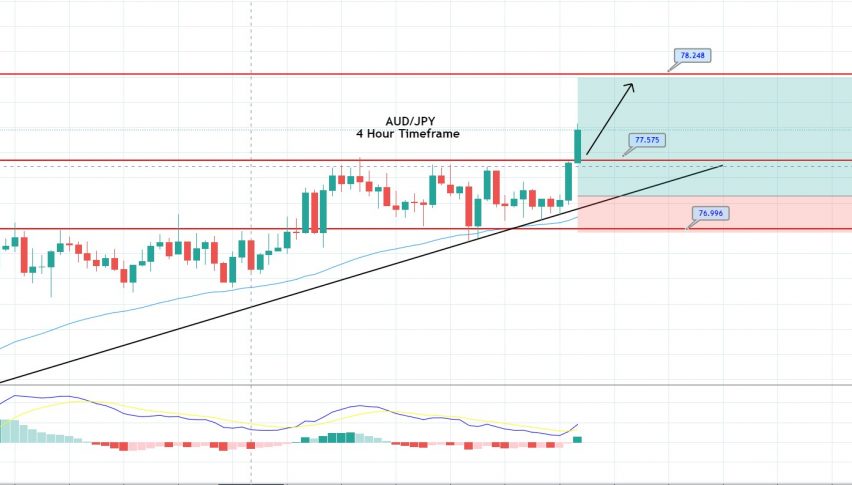Prices Forecast: Technical Analysis
For AUD/JPY, the predicted daily closing price is 101.52, with a range of 101.24 to 102.06. The weekly closing price is forecasted at 101.78, with a range of 100.96 to 102.6. The technical indicators suggest a bullish sentiment, as the RSI is at 56.90, indicating momentum is building. The ATR of 1.0074 shows moderate volatility, which supports potential price movements within the predicted ranges. The price is currently above the pivot point of 101.78, suggesting a bullish trend. Resistance levels at 102.06 and 102.6 may act as barriers to upward movement, while support at 101.24 could provide a safety net. The recent economic data, including retail sales forecasts, may also influence market sentiment positively. Overall, the combination of technical indicators and market conditions suggests a cautious bullish outlook for AUD/JPY.
Fundamental Overview and Analysis
AUD/JPY has shown a steady upward trend recently, reflecting positive investor sentiment towards the Australian dollar amid favorable economic indicators. Factors influencing its value include Australia’s strong commodity exports and Japan’s ongoing monetary easing policies. Investor sentiment appears optimistic, driven by expectations of economic recovery and potential interest rate adjustments. Opportunities for growth exist as Australia continues to benefit from high demand for its resources, while Japan’s economic reforms may enhance its competitiveness. However, risks include potential volatility from geopolitical tensions and fluctuations in commodity prices. Currently, AUD/JPY seems fairly valued, with room for appreciation if economic conditions remain favorable. Market participants should remain vigilant about external factors that could impact this currency pair.
Outlook for AUD/JPY
The future outlook for AUD/JPY appears positive, with market trends indicating a potential continuation of the upward trajectory. Current price movements suggest a bullish sentiment, supported by historical trends and moderate volatility. Key factors likely to influence prices include economic data releases, particularly from Australia and Japan, and global market conditions. In the short term (1 to 6 months), prices may range between 101.24 and 102.6, reflecting ongoing bullish momentum. Long-term forecasts (1 to 5 years) suggest potential growth as Australia capitalizes on its resource wealth, although risks from global economic shifts remain. External events, such as changes in trade policies or economic sanctions, could significantly impact price movements. Overall, maintaining a close watch on economic indicators will be crucial for traders and investors.
Technical Analysis
Current Price Overview: The current price of AUD/JPY is 101.518, slightly up from the previous close of 101.52. Over the last 24 hours, the price has shown slight volatility, with notable upward movement. Support and Resistance Levels: Key support levels are at 101.24, 100.96, and 100.42, while resistance levels are at 102.06, 102.6, and 102.88. The pivot point is at 101.78, and the asset is currently trading above this level, indicating bullish sentiment. Technical Indicators Analysis: The RSI is at 56.90, suggesting a bullish trend. The ATR of 1.0074 indicates moderate volatility, while the ADX is at 9.0243, showing a weak trend strength. The 50-day SMA is at 100.9493, and the 200-day EMA is at 98.1015, indicating no crossover yet. Market Sentiment & Outlook: Sentiment is currently bullish, as the price is above the pivot point, supported by the RSI and ADX trends.
Forecasting Returns: $1,000 Across Market Conditions
The table below outlines potential investment scenarios for AUD/JPY, providing insights into expected price changes and estimated returns on a $1,000 investment.
| Scenario | Price Change | Value After 1 Month |
|---|---|---|
| Bullish Breakout | +5% to ~$106.60 | ~$1,050 |
| Sideways Range | 0% to ~$101.52 | ~$1,000 |
| Bearish Dip | -5% to ~$96.44 | ~$950 |
FAQs
What are the predicted price forecasts for the asset?
The predicted daily closing price for AUD/JPY is 101.52, with a range of 101.24 to 102.06. For the weekly forecast, the closing price is expected to be around 101.78, ranging from 100.96 to 102.6.
What are the key support and resistance levels for the asset?
Key support levels for AUD/JPY are at 101.24, 100.96, and 100.42. Resistance levels are identified at 102.06, 102.6, and 102.88, with the pivot point at 101.78.
What are the main factors influencing the asset’s price?
The asset’s price is influenced by Australia’s strong commodity exports, Japan’s monetary policies, and overall investor sentiment. Economic data releases from both countries also play a significant role in price movements.
What is the outlook for the asset in the next 1 to 6 months?
In the short term, AUD/JPY is expected to maintain a bullish trend, with prices likely ranging between 101.24 and 102.6. Economic conditions and market sentiment will be crucial in determining the asset’s performance.
What are the risks and challenges facing the asset?
Risks include potential volatility from geopolitical tensions, fluctuations in commodity prices, and changes in monetary policy. Market participants should remain vigilant about these factors as they could impact AUD/JPY’s price.
Disclaimer
In conclusion, while the analysis provides a structured outlook on the asset’s potential price movements, it is essential to remember that financial markets are inherently unpredictable. Conducting thorough research and staying informed about market trends and economic indicators is crucial for making informed investment decisions.



